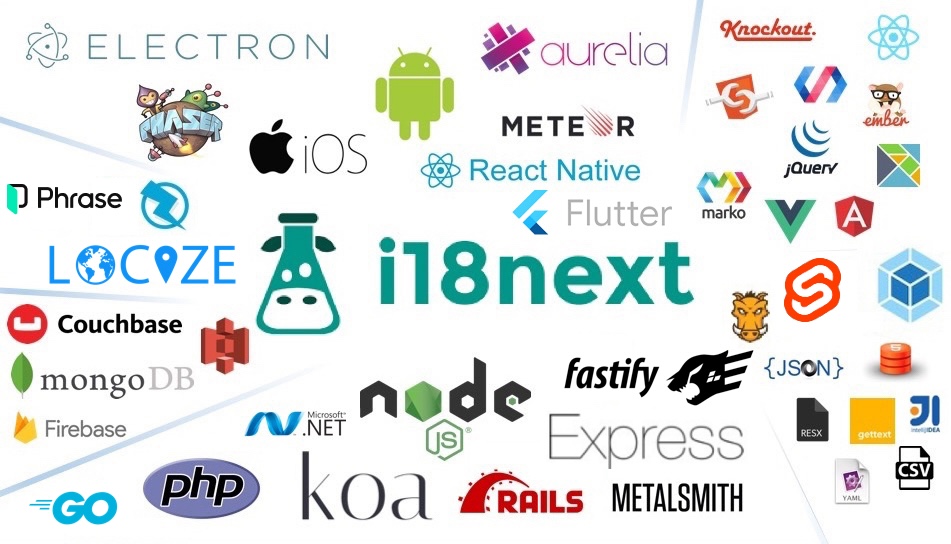Localization Support
- i18next:
i18next offers extensive localization support, allowing developers to manage translations for multiple languages and dialects. It supports features like pluralization, context-based translations, and nested translations, making it suitable for complex applications that require nuanced language handling.
- react-intl:
react-intl is built specifically for React applications, providing a rich set of localization features including message formatting, date and time formatting, and number formatting. It leverages React's context API to manage localization, making it a natural fit for React developers.
- node-polyglot:
node-polyglot provides basic localization support focused on string interpolation and simple translations. It is designed for projects that do not require extensive localization features, making it lightweight and easy to use for simple applications.
Integration and Ecosystem
- i18next:
i18next has a broad ecosystem with plugins and integrations for various frameworks, including React, Angular, Vue, and even Node.js. This flexibility allows developers to use it across different parts of their application stack, ensuring consistency in localization.
- react-intl:
react-intl integrates seamlessly with React, providing components and hooks that align with React's declarative nature. It is part of the FormatJS suite, which offers additional libraries for formatting and internationalization, enhancing its capabilities within the React ecosystem.
- node-polyglot:
node-polyglot is a standalone library that focuses on simplicity and does not have extensive integrations with other frameworks. It is best suited for projects where minimalism is a priority and where the overhead of additional dependencies is undesirable.
Complexity and Learning Curve
- i18next:
i18next has a moderate learning curve due to its extensive features and configuration options. Developers may need to invest time in understanding its advanced functionalities, but this complexity allows for powerful localization capabilities in larger applications.
- react-intl:
react-intl has a learning curve that is manageable for developers familiar with React. Its component-based approach aligns well with React's paradigms, making it easier for React developers to adopt and use effectively.
- node-polyglot:
node-polyglot is very easy to learn and implement, making it ideal for developers who want quick localization without the complexity of larger libraries. Its straightforward API allows for rapid integration into projects.
Performance
- i18next:
i18next is optimized for performance, allowing for lazy loading of translations and efficient management of language resources. This can help improve the loading times of applications that require multiple languages, especially in larger applications with extensive translation files.
- react-intl:
react-intl is designed for performance within React applications, providing optimized rendering of localized strings and efficient updates. It minimizes re-renders by utilizing React's context and memoization techniques.
- node-polyglot:
node-polyglot is lightweight and performs well for simple use cases, but may not be suitable for applications with complex localization needs or large translation files, as it lacks advanced performance optimizations.
Extensibility and Customization
- i18next:
i18next is highly extensible, allowing developers to create custom backends, plugins, and middleware to suit their specific localization needs. This makes it a versatile choice for applications that require tailored solutions.
- react-intl:
react-intl provides a good level of customization through its API, allowing developers to create custom formats and components. However, it is primarily designed to work within the React ecosystem, which may limit its use in non-React applications.
- node-polyglot:
node-polyglot offers limited extensibility, focusing on simplicity and ease of use rather than customization. It is best for projects that do not require extensive modifications or additional features.

















